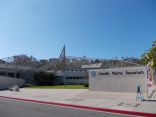- Bahamas
- Bermuda
- Canada
- Costa Rica
- Cuba
- Curaçao
- Dominican Republic
- Guadeloupe
- Guatemala
- Mexico
- Trinidad & Tobago
-
USA
- Alabama
- Alaska
- Arizona
- Arkansas
-
California
- Carlsbad */**
- Escondido */**
- Fresno
- La Jolla */**
- Long Beach */**
- Los Angeles */**
- Monterey Bay */**
- Oakland *
- Palm Desert
- Sacramento *
- San Diego Seaworld */**
- San Diego Zoo */**
- San Francisco Aquarium */**
- San Francisco Museum */**
- San Francisco Zoo */**
-
San Pedro */**
- Santa Barbara
- Santa Monica *
- Vallejo
- Colorado
- Connecticut
- District of Columbia
- Florida
- Georgia
- Hawaii
- Idaho
- Illinois
- Indiana
- Iowa
- Kansas
- Kentucky
- Louisiana
- Maryland
- Massachusetts
- Michigan
- Minnesota
- Mississippi
- Missouri
- Nebraska
- Nevada
- New Jersey
- New Mexico
- New York
- North Carolina
- North Dakota
- Ohio
- Oklahoma
- Oregon
- Pennsylvania
- Rhode Island
- South Carolina
- South Dakota
- Tennessee
- Texas
- Utah
- Virginia
- Washington
- Wisconsin
Cabrillo Marine Aquarium
Map 2015 Map 2020
www.cabrillomarineaquarium.org
San Pedro
Country: USA
State: California
Opened 1935
Species 200
Explore the seas from Southern California, start at the Kelp forests with fish like the giant kelpfish and go on to the rocky shores home to sea starts. At the mudflats you meet the fiddlers crab and at the sandy beaches the Californian grunion. Finally out in the open ocean you meet the funny Californian sea lions
Cabrillo Marine Aquarium
3720 Stephen M White Drive
San Pedro
CA 90731
USA
Phone nr 310-548-7562
Open minimum Tuesday-Friday 12-5pm and weekend 10am-5pm. Closed Mondays, Christmas and Thanksgiving
Entrance fee (these are sugested donations)
- Adult 7 Dollars
- Child 3 Dollar
Annual card
- Adult 50 dollars
- Family* 75 dollars
*Family cards are valid for 2 adults in the same household and up to 2 children, each additional child is 10$
There are several daily feeding shows, for the time please ask at the till station.
History
The aquarium began in 1935 as a collection of marine specimens stored in the Cabrillo Beach Bathhouse. In 1949, John Olguin, captain of the Cabrillo Beach lifeguards, was appointed director of the museum. He popularized the aquarium by giving impromptu tours to visiting school groups as well as starting the popular evening program of viewing and learning about the bizarre grunion mating practices on the beach. On October 21, 1981, the new $3 million, Frank Gehry-designed museum opened and the old museum closed. Throughout the 1990s, the museum experienced significant growth and its name was changed from Cabrillo Marine Museum to the Cabrillo Marine Aquarium to highlight its living collections. It expanded its public programs sector and added an Ocean Outreach Education program, a discovery lab, and a child volunteer program named Sea Rangers. They also created a non-profit, called the Friends of the Cabrillo Marine Aquarium, to assist in funding. In 2004, the facility expanded with an Exploration Center, the S. Mark Taper Foundation Courtyard, an Aquatic Nursery research lab and the Virginia Reed Moore Research Library. The expansion was designed by Barton Phelps & Associates
DE: Dieses Aquarium ist eher ein Museum das versucht, das Leben und Treiben der Küste näher zu bringen. Deshalben werden viele lebendige kleinere Lebewesen gezeigt.
DK: Dette akvarium er snarere er museum, der forsøger, at få dig nærmere til livet og trivslen i og af havet. Derfor vises en del små dyr.